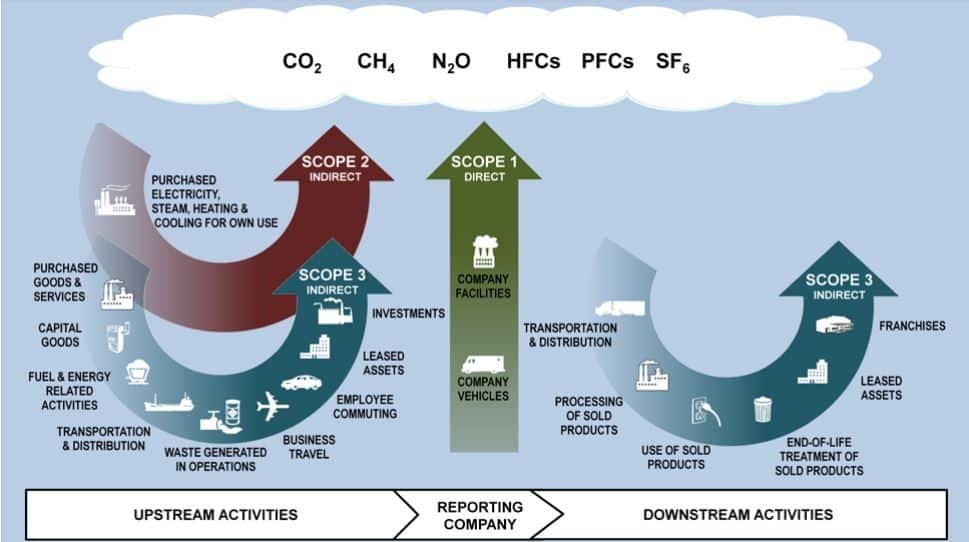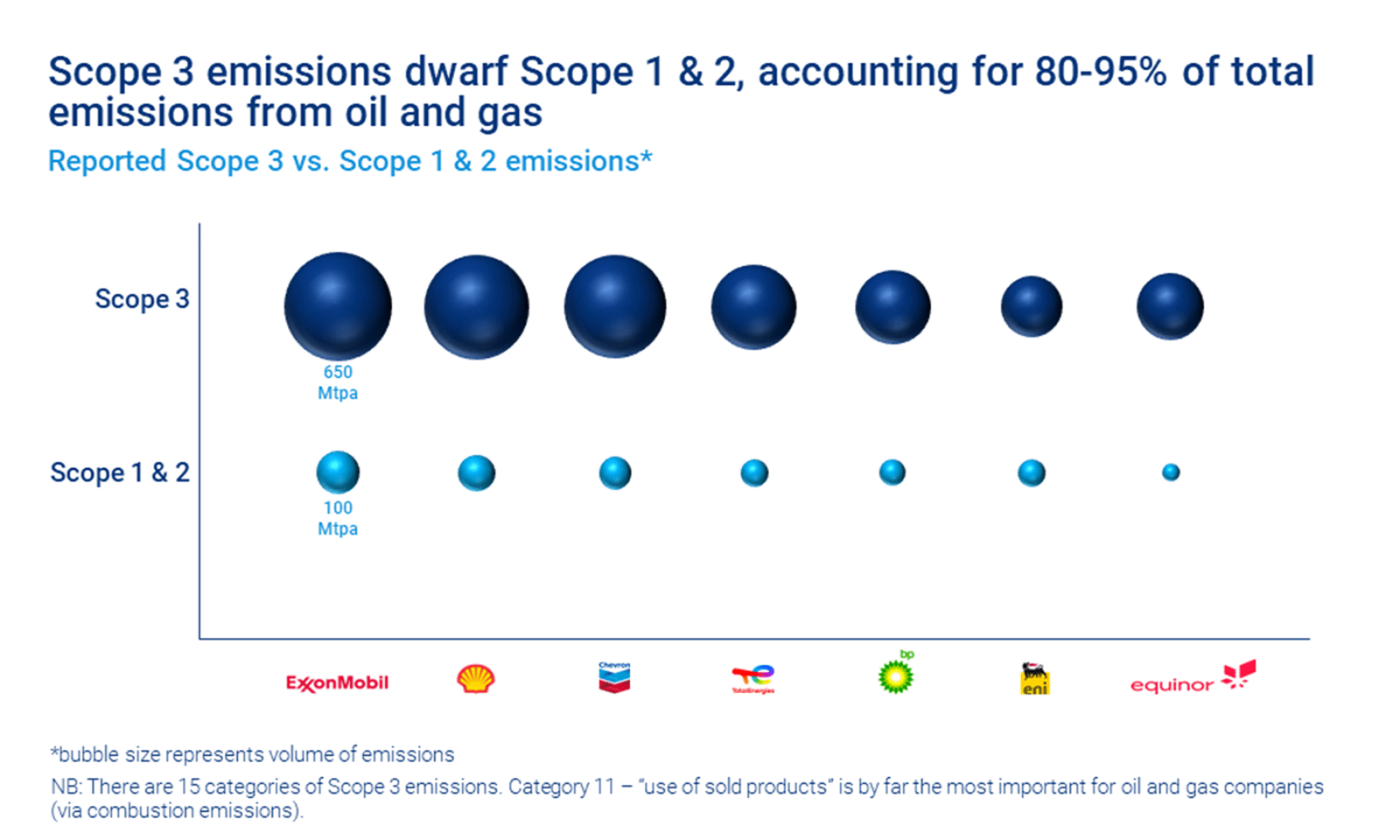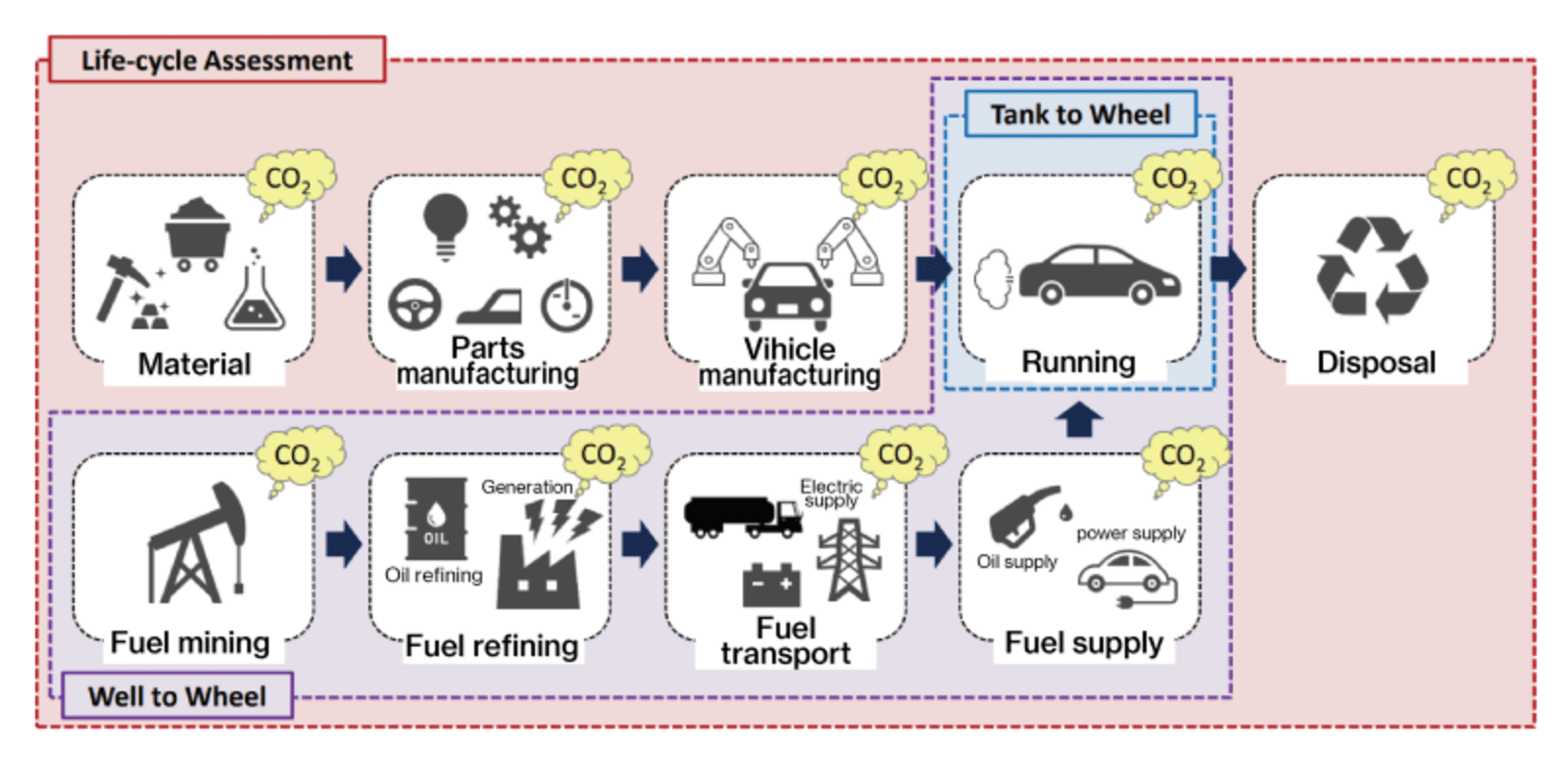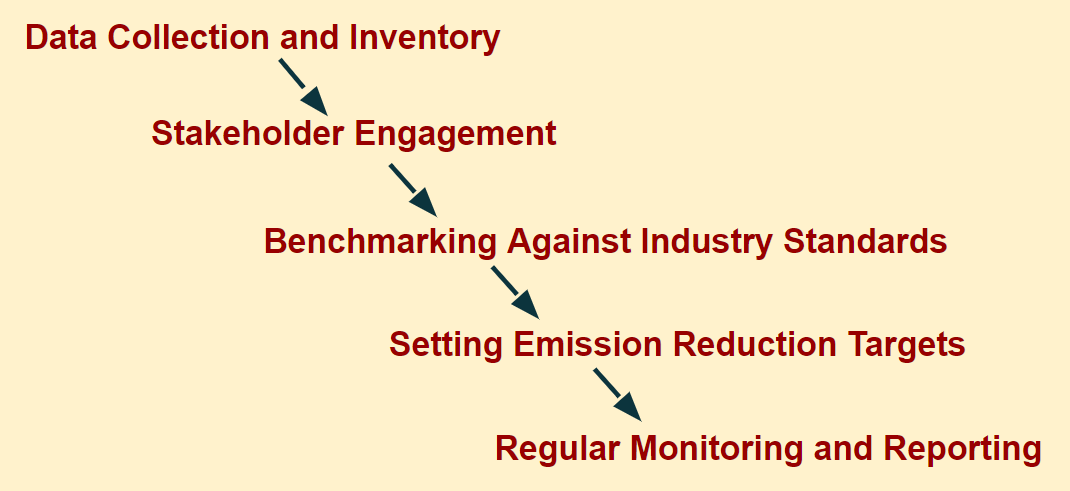In the realm of environmental sustainability and corporate responsibility, the concept of Scope 3 emissions has gained significant attention. Understanding Scope 3 emissions and knowing how to reduce them is crucial for businesses wanting to address their environmental impact.
This comprehensive guide delves into the definition, categories, and methods of identifying Scope 3 emissions and the various means to curb them.
Scope 3 Emissions: What You Need To Know
According to the Greenhouse Gas Protocol, Scope 3 emissions include all indirect emissions that occur in your company’s value chain.
Unlike the other two emissions, Scope 1 (direct emissions from owned or controlled sources) and Scope 2 (indirect emissions from purchased electricity, heat, or steam), Scope 3 emissions capture a broader range of impacts. These emissions are often more challenging to measure and control because of their much diverse and dispersed nature.


Scope 3 emissions come under three different categories:
- Upstream Emissions: These emissions occur in the supply chain, covering activities such as raw material extraction, production, and transportation of goods and services.
- Downstream Emissions: This category involves emissions related to the use, disposal, and end-of-life treatment of a company’s products.
- Value Chain Emissions: Encompassing the entire lifecycle of a product or service, value chain emissions include both upstream and downstream impacts.
Identifying Indirect Emissions Sources
Identifying and quantifying Scope 3 emissions is a complex task, but essential for understanding of your company’s carbon footprint. Here are the key steps in identifying indirect emissions sources:
Stakeholder Engagement:
- Collaborate with suppliers, customers, and other stakeholders to gather data on emissions throughout the value chain.
- Understand the environmental impact of supplier activities, transportation, and end-use of products.
Life Cycle Assessment (LCA):
- Conduct a life cycle assessment to analyze the environmental impact of products/services from raw material extraction to end-of-life disposal.
- Consider various environmental indicators, such as carbon footprint, water usage, and land use.
Emission Factors and Benchmarks:
- Utilize emission factors and industry benchmarks to estimate emissions from specific activities within the value chain.
- Compare performance against industry averages to identify areas for improvement.
Technology and Data Solutions:
- Leverage advancements in technology, such as data analytics and digital tools, to enhance the accuracy of emission measurements.
- Implement robust data management systems to track and report emissions data effectively.
Importance of Addressing Scope 3 Emissions
Keep in mind that embracing Scope 3 emissions as a part of your sustainability strategy is not only a corporate responsibility; it’s also a proactive approach towards building a resilient and environmentally conscious business.
These indirect emissions, spanning the entire value chain, contribute substantially to the overall carbon footprint of a company. Most businesses have Scope 3 emissions that are responsible for more than 70% of their total footprint.
- Per Wood Mackenzie, value chain emissions account for 80% to 95% of total carbon footprint from oil and gas firms.


Essentially, by tackling Scope 3 emissions, oil and gas firms and other businesses can make meaningful strides toward reducing their ecological footprint and combating climate change. Doing so also enables companies to promote sustainable resource use, from raw material extraction to end-of-life disposal.
Not to mention that many Scope 3 activities do impact biodiversity. Addressing these emissions helps project natural habitats and the diverse species that inhabit them.
Knowing how to reduce your own company’s Scope 3 emissions matters a lot in the view of corporate responsibility and stakeholder expectations. This has never been more important in an era where environmental consciousness is at the forefront.
Additionally, governments and regulatory bodies are placing greater emphasis on how corporations must be responsible for their environmental footprint.
Apart from governments, stakeholders – customers, investors, and employees – are also more concerned with the environmental practices of the companies they engage with. Taking steps to manage Scope 3 emissions fosters trust and enhances the company’s reputation as an environmentally responsible entity.
Most notably, investors are increasingly considering environmental, social, and governance (ESG) factors in their investment decisions. The “E” factor seems to weigh the heaviest at this critical moment when investors made their final choice.
So, how do you assess Scope 3 emissions?
Strategies for Assessing Scope 3 Emissions
Assessing Scope 3 emissions involves a combination of advanced methodologies, data-driven approaches, and strategic baseline establishment. Establishing baselines, on the other hand, forms the basis for setting realistic emission reduction targets and ensures your company’s commitment to sustainable practices.
Here are some strategies that collectively contribute to effective Scope 3 emission categories management you may consider.
Life Cycle Assessment (LCA): this strategy allows you to quantify the environmental impacts at each stage of your product or service’s life. LCA provides a holistic view, considering raw material extraction, production, transportation, product use, and end-of-life disposal.
-
For example, the figure below is an overview of LCA for automobiles. Conventionally, the focus was only on CO2 emissions during driving.


Nowadays, however, as required by LCA, it is the manufacturer’s responsibility to reduce environmental impacts at all phases of the product life cycle, from fuel mining and materials procurement to manufacturing, use, disposal, and recycling.
Emission Factors (EF) and Conversion Coefficients: This method is especially useful when detailed data is not available. You can use standardized emission factors and conversion coefficients relevant to your specific industry to estimate emissions from various sources. This is most particularly applicable when determining power or electricity emissions as explained in this article.
Data Analytics and Technology: You can leverage advanced data analytics and technology solutions to process large datasets and enhance the accuracy of emissions measurements. By using real-time data monitoring and analysis, you will have more informed decision-making and proactive emission management.
Now when it comes to establishing baselines, you have to keep in mind several key steps. Firstly, data collection and inventory entail gathering comprehensive data on all activities within your value chain, including Scope 3 emissions. This detailed inventory forms the foundation for your accurate baselines.
Moreover, stakeholder engagement is essential. It requires you to collaborate with suppliers, customers, and other stakeholders to gather relevant emission information. This involvement ensures you’ll have a comprehensive understanding of the supply chain, enhancing baseline accuracy.
Additionally, benchmarking against industry standards allows you to make a comparison, identifying areas for improvement and setting realistic reduction targets. Setting these targets based on established baselines involves defining ambitious yet achievable goals for different stages of the value chain.
- Remember that clear targets will guide your strategies, providing a clear pathway for reducing emissions over time.
Finally, implementing regular monitoring and reporting of emissions data against established baselines is crucial. It will help you ensure accountability and facilitate continuous progress toward your organization’s emission reduction goals.


This time, let’s dig deeper into each of the strategies so you get the clearest picture on how to reduce Scope 3 emissions.
Collaborative Initiatives with Supply Chain Partners
Collaborating with supply chain partners involves engaging both with your suppliers and customers in concerted efforts towards sustainability. This begins with transparent communication and fostering open dialogue with suppliers regarding shared sustainability goals.
A crucial part of this strategy is involving the establishment of initiatives to actively include suppliers in sustainability efforts. A good example of this is the Vietnamese EV company, VinFast’s strategy of establishing its EV battery line and supply chain. The automaker collaborates with battery industry leaders like China’s CATL to develop new battery and EV technologies.
You may also have to integrate sustainability criteria into your procurement processes to ensure that environmental considerations have a key role in supplier selection. This also means establishing emission reduction targets together with your supply chain partners.
That may involve a lot of work as you need to align your goals with theirs for your sustainability strategies to work. But that ensures a more inclusive participation and greater overall success in reducing emissions across the supply chain.
Lastly, don’t forget your customers. Educate them about your company’s sustainability practices and involve them in initiatives to reduce product-related environmental impact. What heavy-equipment manufacturer Komatsu did is a perfect example. It collaborated with its customers in planning, developing, testing, and deploying zero-emissions mining equipment.
Sustainable Procurement Practices
As mentioned earlier, it’s also important to incorporate sustainable procurement practices in reducing environmental footprints in your supply chain. This means selecting suppliers with low emission practices which can substantially contribute to emission reduction efforts. Collaborative goal-setting with suppliers can further strengthen this approach.
For chemical companies, reducing Scope 3 emissions heavily lies in sourcing low-carbon feedstock or increasing the share of recycled or bio-based raw materials. This is possible by partnering with low-carbon or recycled- or bio-based-feedstock suppliers.
For example, specialty-chemical company Unilever partnered with Evonik to scale bio-based raw material for use in dishwasher detergent. The initiative can help lower the carbon intensity of inputs.
But one necessary thing is to assess the environmental impacts in your procurement decisions. Considering the full life cycle of products or services and using tools like LCAs can help you quantify environmental footprints.
By choosing suppliers and products with lower environmental impacts, you minimize your overall environmental footprint, benefiting both the environment and your company’s reputation.
Travel and Transportation Emission Reduction Strategies
Employee travel is a major source of Scope 3 emissions. Encouraging sustainable commuting options like public transportation, carpooling, cycling, or walking reduces emissions from employee travel.
You can do that by providing incentives such as public transportation subsidies or flexible work arrangements to motivate employees. Promoting remote work options also reduces commuting emissions.

Prioritizing virtual meetings and video conferencing reduces the need for travel. When travel is necessary, opting for lower-emission modes like trains or electric vehicles helps.
More importantly, clear guidelines and policies for business travel ensure consistent emission reduction efforts across the organization.
In the SaaS industry, the transition to remote work has profoundly influenced the emissions landscape. Global Workplace Analytics (GWA) reports that if individuals who have the ability to work remotely did so just half of the time, it would lead to a GHG reduction equivalent to removing the entire New York State workforce from commuting permanently.
The leading SaaS provider, Microsoft, is well-known for reducing its Scope 3 emissions, which include data center operations, corporate travel, and employee commuting. The tech giant pledges to achieve carbon negative by 2030 and net zero by 2050. And one crucial strategy to reaching that goal is promoting work-from-home setup to cut commuting emissions.
Implementing Energy Efficiency Measures
Another essential strategy you can employ to reduce your organization’s Scope 3 emissions is adopting energy efficiency measures. Transitioning to renewable energy sources like solar, wind, hydroelectric, or geothermal power enhances energy efficiency and reduces environmental impact.
By investing in renewable energy, you decrease reliance on fossil fuels and contribute to the global shift toward clean energy. Amazon is known for its massive efforts in supporting renewable energy initiatives, investing millions of dollars into them.


Furthermore, it helps significantly if you prioritize investing in energy-efficient technologies that minimize energy consumption and optimize resource use. For instance, upgrading to energy-efficient equipment, such as LED lighting and smart building systems, and instituting energy management systems and audits.
Promoting energy-saving behaviors among employees further enhances efficiency. Embracing these measures reduces operational costs, cuts carbon emissions, and strengthens sustainability efforts.
Employee Engagement and Behavioral Changes
Educating your employees about sustainability issues and their role in mitigating them is crucial. You can conduct workshops, seminars, or informational sessions to raise awareness about environmental challenges and the importance of individual actions.
Providing resources like informational materials or online courses on sustainability topics further empowers employees to make informed decisions.
Doing so can help you encourage sustainable practices in the workplace and foster a culture of sustainability. Common examples of these practices are recycling, reducing waste, and conserving energy.
Recognizing and rewarding your employees for their emission reduction efforts reinforces positive behaviors and encourages continuous improvement. You can integrate all these into daily operations and decision-making processes, turning sustainability into a strong organizational culture.
Reporting and Monitoring Progress
Finally, it’s important to set clear Key Performance Indicators (KPIs) for measuring and tracking your company’s sustainability progress. These KPIs should be specific, measurable, achievable, relevant, and time-bound (SMART). Examples include carbon emissions reduction targets, energy efficiency improvements, waste reduction goals, and adoption of renewable energy sources.
By establishing KPIs, you can assess your performance against predetermined baselines and identify areas for improvement. Tech giant Meta is excellent at using KPIs in tracking its sustainability efforts and addressing pertinent issues.
But you also need to maintain regular reporting and transparency practices for accountability and stakeholder engagement. You should provide transparent disclosures on your initiatives, progress, and KPIs through annual reports, websites, or other communication channels.
Additionally, soliciting feedback from stakeholders and incorporating it into your future emission reduction strategies fosters a culture of transparency.
Building a Sustainable Future through Effective Scope 3 Emissions Reduction
So, that’s how you tackle Scope 3 emissions. The measures identified seem to be too much to bear but it’s imperative to build a sustainable future.
By implementing collaborative initiatives with your supply chain partners, you can significantly reduce your company’s indirect environmental impact. Plus, sustainable procurement practices, travel and transportation emission reduction strategies, and employee engagement further contribute to your emission reduction efforts.
And remember to report and monitor your progress, including establishing key performance indicators and maintaining transparency, and track sustainability performance.
By collectively embracing these measures, you won’t only mitigate your business’ environmental footprint but also pave the way for a more sustainable future for the planet.
- SEO Powered Content & PR Distribution. Get Amplified Today.
- PlatoData.Network Vertical Generative Ai. Empower Yourself. Access Here.
- PlatoAiStream. Web3 Intelligence. Knowledge Amplified. Access Here.
- PlatoESG. Carbon, CleanTech, Energy, Environment, Solar, Waste Management. Access Here.
- PlatoHealth. Biotech and Clinical Trials Intelligence. Access Here.
- Source: https://carboncredits.com/how-to-reduce-scope-3-emissions-key-strategies-that-work/



